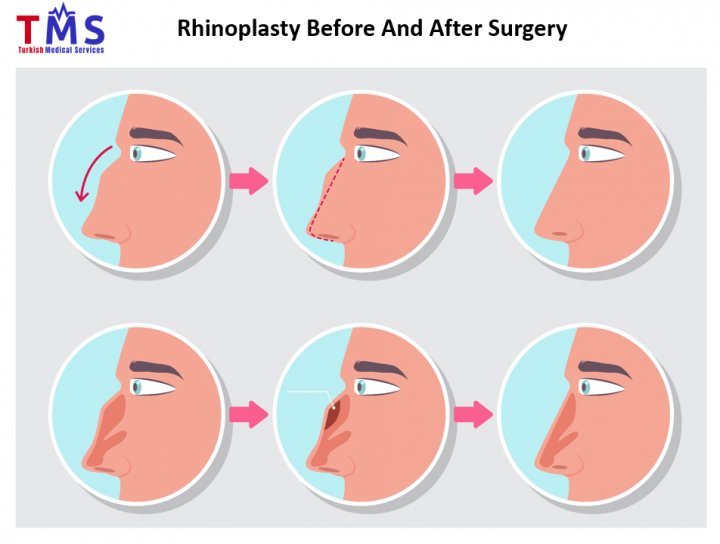
Perhaps the most commonly performed and most difficult facial plastic surgery is rhinoplasty. It is performed to correct intrinsic and extrinsic nasal pathology, to modify unsatisfactory aesthetic appearance, to reduce airway obstruction (due to septal deviation, inferior turbinate hypertrophy, deviated/ fractured nasal bones, and narrow internal nasal valve area), and to reconstruct congenital nasal anomalies. During a rhinoplasty, the nasal skin, subcutaneous soft tissue, cartilaginous and bony framework, and mucous membrane lining are manipulated. The open rhinoplasty is differentiated from the endonasal rhinoplasty in that the incision is made in the columella (fleshy tip of the nose that separates the nares) in the open approach. The general principle of a rhinoplasty consists of a separation of the nasal skin and soft tissues from the Osseo cartilaginous nasal framework so that the framework can be reshaped to produce the desired nasal contours. Rhinoplasty is a technically challenging procedure that has complication rates from 4 to 18.8%. Postoperative scarring and edema as well as patient dissatisfaction can lead to revision surgery (secondary rhinoplasty). Over the past 10 years, rhinoplasty surgery has trended toward using structural techniques that require cartilage tissue to reconstruct shape, bolster anatomic components, expand the airway, and establish appropriate aesthetic contour. Advances in this area include the broader use of cartilage for structural grafting. Traditionally, rib cartilage was used for only major reconstructive nasal operations, but more recently the number and type of grafts that are used in rhinoplasty have increased at least 10-fold as rib graft use became more prevalent in even primary cosmetic rhinoplasty. Several new technological devices have evolved in recent years including polydioxanone foils to stabilize structural planes, ultrasonic devices to perform precise osteotomies, and the intranasal application of conventional high-speed powered instruments. Digital imaging has become an increasingly important element of rhinoplasty planning, evolving to become an essential component of the preoperative consultation. Three-dimensional (3-D) imaging systems along with 3-D image morphing technologies are now widely used by most surgeons, though there is no universally accepted software platform.


No Any Replies to “RHINOPLASTY”
Leave a Reply